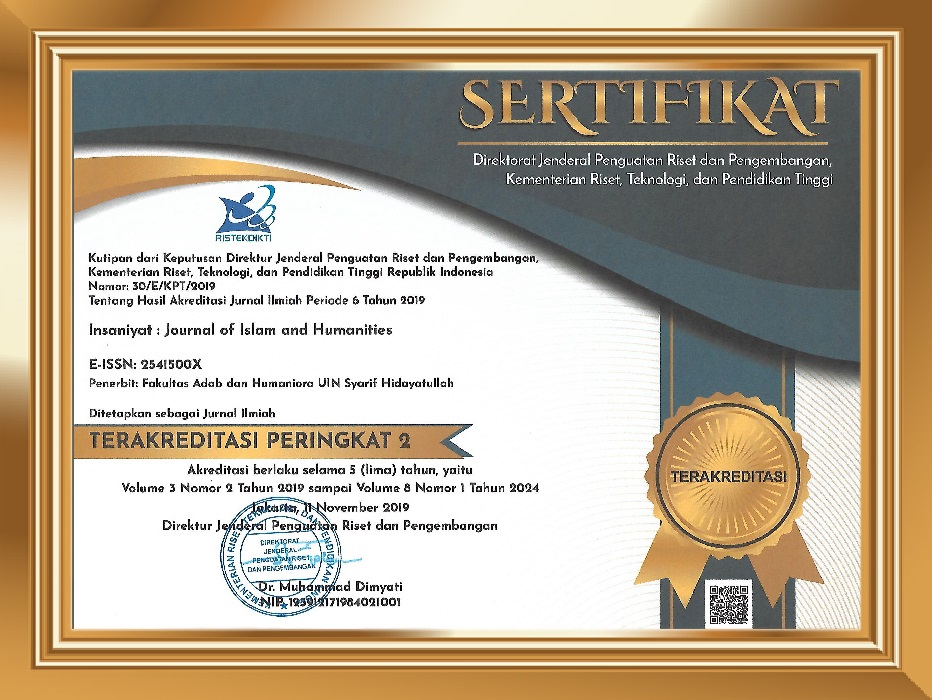Multilingualism in Sunan Ampel Tomb Complex: A Linguistic Landscape Study
Abstract
The present study focuses on the languages operating on the written signage that contribute directly to the
formation of the linguistic landscape. The study chose Sunan Ampel Tomb in Surabaya, Indonesia, as one of
the sites that has become a heritage conservation due to the history hidden in the site. This site is a part of the other sites in a series leading to the history of nine saints (Wali Songo) who brought Islam to Indonesia through one of the islands, Java. The study aimed at describing the linguistic landscape of the site to help learn about the languages operating on the signage found in Sunan Ampel Tomb complex and the hidden history leading to multilingual multilingualism in the area. By using a direct observation and interview to gather the data,the study informs that the sites are typically dominated with Indonesian language operating in monolingualsignage. Despite a few in number, the multilingual signage can still be found to depict several languages including English, Arabic, and Indonesian language. The domination of Bahasa Indonesian demonstrates the implementation of policy for using the language as the national language. While English and Arabic are used for the business purpose. The study also discovers the characteristics of the language displaying on the signage from the size of the fonts. In conclusion, linguistic landscape in Sunan Ampel Tomb describes the history of how the saint brought Islam to the society. Arabic artifacts stereotyping Islam existence can hardly be found here, and it becomes a proof the saint taught Islam without trying to change the already existing customs, cultures, and languages as well.
Keywords
References
Alfaifi, A. (2015). Linguistic Landscape: The Use of English in Khamis Mushait Saudi Arabia [State University of New York at Fredonia]. In SUNY. https://doi.org/10.4324/9781315276892-16
Aristova, N. (2016). Rethinking Cultural Identities in the Context of Globalization: Linguistic Landscape of Kazan, Russia, as an Emerging Global City. Procedia - Social and Behavioral Sciences, 236 (December 2015), 153–160. https://doi.org/10.1016/j.sbspro.2016.12.056
Backhaus, P. (2006). Multilingualism in Tokyo: A Look into the Linguistic
Landscape. International Journal of Multilingualism, 3(1), 52–66. https://doi.org/10.1080/14790710608668385
Baranova, V., & Fedorova, K. (2019). ‘Invisible Minorities’ and ‘Hidden Diversity’n Saint-Petersburg’s Linguistic Landscape. Language and Communication, 68, 17–27.https://doi.org/10.1016/j.langcom.2018.10.013
Brueckner, J. K. (2013). Slums in Developing Countries: New Evidence for Indonesia. Journal of Housing Economics, 22(4), 278–290. https://doi.org/10.1016/j.jhe.2013.08.001
Budiarto, A. S., Indriastjario, & Sardjono, A. B. (2016). The Urban Heritage of Masjid Sunan Ampel Surabaya, toward the Intelligent Urbanism Development. Procedia - Social and Behavioral Sciences, 227 (November 2015), 601–608. https://doi.org/10.1016/j.sbspro.2016.06.121
Gorter, D. (2006). Linguistic Landscape: A New Approach to Multilingualism. In Linguistic Landscape: A New Approach to Multilingualism.
Gorter, D. (2009). The Linguistic Landscape in Rome: Aspects of Multilingualism and Diversity. In The IPRS (Istututo Psicoanalitico Per Le Ricerche Sociale), ROMA (Issue February 2007). https://pure.knaw.nl/portal/en/publications/7cd3c64e-c2f5-4252-
b8fd-19359e197566
Gorter, D., & Cenoz, J. (2015). Linguistic Landscape and Multilingualism. Language Awareness and Multilingualism, 1–13. https://doi.org/10.1007/978-3-319-02325-0_27-1
Grishaeva, E. B. (2015). Linguistic Landscape of the City of Krasnoyarsk. Procedia -Social and Behavioral Sciences, 200 (October), 210–214. https://doi.org/10.1016/j.sbspro.2015.08.054
Landry, R., & Bourhis, R. Y. (1997). Linguistic landscape and ethnolinguistic vitality: An Empirical Study. Journal of Language and Social Psychology, 16(1), 23–49. https://doi.org/10.1177/0261927X970161002
Lanza, E., & Woldemariam, H. (2014). Indexing modernity: English and Branding in the Linguistic Landscape of Addis Ababa. International Journal of Bilingualism, 18(5),491–506. https://doi.org/10.1177/1367006913484204
Mahfudi, I. (1995). Asal Usul dan Perkembangan Kampung Arab di Ampel Surabaya. IAIN Sunan Ampel Surabaya.
Said, I. G., & Rohmah, Z. (2018). Contesting Linguistic Repression and Endurance: Arabic in the Andalusian Linguistic Landscape. Pertanika Journal of Social Sciences and Humanities, 26(3), 1865–1881.
Sunyoto, A. (2016). Atlas Wali Songo. Mizan Media Utama.
Takhtarova, S. S., Kalegina, T. E., & Yarullina, F. I. (2015). The Role of English in Shaping the Linguistic Landscape of Paris, Berlin and Kazan. Procedia - Social and Behavioral Sciences, 199, 453–458. https://doi.org/10.1016/j.sbspro.2015.07.531
Van Mensel, L., Vandenbroucke, M., & Blackwood, R. (2017). Linguistic Landscape. In G. Ofelia, N. Flores, & M. Spotti (Eds.), The Oxford Handbook of Language and Society (pp. 423–449). Oxford University Press.https://doi.org/https://www.oxfordhandbooks.com/view/10.1093/oxfordhb/9780190212896.001.0001/oxfordhb-
#:~:text=10.1093/oxfordhb/9780190212896.001.0001
DOI: 10.15408/insaniyat.v6i1.21141
Refbacks
- There are currently no refbacks.







